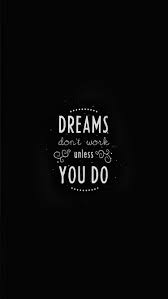
What do you know about creative thinking today that you wished you knew twenty years ago?
That creativity is a phenomena that results from a certain combination of relationships. This combination includes the principles of intention, belief, attitude, behavior, language, knowing how to change the way you look at things, knowing how to think in different ways and learning how to think inclusively without the prejudices of logic. We’ve been schooled to think of them all as separate and distinct entities so they can be described and explained. Despite the apparent separateness of these at this level, they are all a seamless extension of each other and ultimately blend into each other.
When you look at nature, contents aren’t contained anywhere but are revealed only by the dynamics. What matters to nature are the ways relationships interact, the way they cooperate and combine to form coherent patterns. In nature form and content are inextricably connected and can’t be separated. The healthy pattern of trees bending in concert creates harmony and beauty, whereas, an unhealthy pattern is destructive and ugly. With the trees, it is the combination of relationships between the wind, rain, roots and soil that forms the healthy or unhealthy relationships. With people, it is a common body of human behaviors and generalized principles from which patterns blend together to create the person.
Like nature, the contents of creative genius aren’t contained anywhere but also are revealed by the dynamics. When you look at the behaviors of creative geniuses throughout the history of the world, you will find that, like the patterns of nature, the form and contents of their behaviors are inextricably connected and can’t be separated. Creators have the intention to create, and act and speak in a positive and joyful manner. Creators look at what is and what can be instead of what is not. Instead of excluding possibilities, creators consider all possibilities, both real and imagined. Creators interpret experiences for themselves and disregard the interpretations of past thinkers. Creators learn how to look at things in different ways and use different ways of thinking. And most importantly, creators are creative because they believe they are creative and have the intention to create
Describe strategies you apply in your daily life to make it more creative.
THOUGHT WALKS. I like to take walks around my home or workplace and the surrounding grounds. I look for objects, situations or events that you I can compare with whatever project II happen to be working on. For example, suppose your problem is how to improve communications in your company. You take a walk and notice potholes in the road. How are “potholes” like your corporate communication problem? For one thing, if potholes are not repaired, they get bigger and more dangerous. Usually road crews are assigned to repair the potholes. Similarly, unless something is done to improve corporate communications, it’s likely to deteriorate even further. An idea with a similar relation to “road crews” is to assign someone in the organization to fill the role of “communications coach.” The role would entail educating, encouraging, and supporting communication skills in all employees. And just as road crews are rotated, you can rotate the assignment every six months.
I also deliberately program changes into my daily life. I make a list of things I do by habit (little things that make life comfortable but also make it unnecessary to think. Then I take the habits, one by one, and consciously change them for a day or so. Examples are:
• Take a different route to work.
• Watch a different news channel.
• Read a different newspaper. Read foreign newspapers.
• Listen to a different radio station. Listen to the BBC.
• Change recreations. Instead of golf, try boating.
• Spend a full day away from all communication technology (telephone, cell, computer, radio, television, and so on).
• Play word games. Take a short word and expand it into several sentences using each letter of the word as the first word of each letter of each sentence. Example: The word is “Damn.” Some sentences are “Do airplanes make noise?” “Dottie ate many nuts.”
• Another word game I play is to describe what I’m thinking or feeling in exactly six words. Examples:
o “Boy if I had another year.”
o “Never should have bought this computer.”
o ”I can still create novel ideas.”
• Change your reading habits. Instead of nonfiction. Read fiction. Tabloids, comics, poetry,
the bible, Koran, scientology tracts.